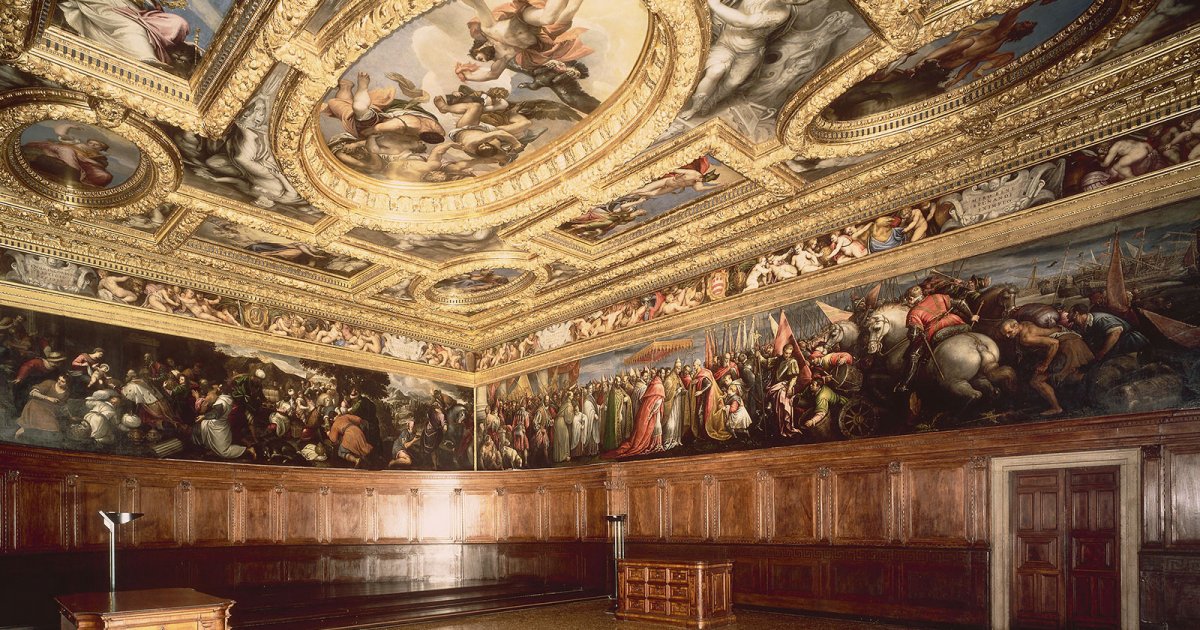DOGE'S PALACE, Council Of Ten
 Language: English / USA
Language: English / USA
The room you are in now, also rich in gilding and paintings, is Senate Hall or the Hall of the "Pregàdi", so called because the Senators had to be "prayed" to attend the meetings at one time. To the right of the platform is a striking astrological clock with zodiac symbols, while the Senators' seats are all arranged along the wall. The canvases embedded in the massive ceiling are works from various artists of the end of the 16th century, while those along the walls are for the most part by another great Venetian master, Jacopo Palma il Giovane.
You've now entered the part of the palace used for the administration of justice, and immediately reach the room where the most feared Council of Ten met, which served to watch over the safety of the city and the state.
This hall was spared by the great fire that devastated the palace in the 16th century, and offers a view of Paolo Veronese's debut in Venice, who was called on to paint some ceiling-paintings after having distinguished himself with some frescoes in various Venetian villas. Just think, he was only twenty-five years old, but he didn't take long to understand his exceptional ability to make the most complicated symbolic scenes come alive: thanks to the charm of his figures, every subject has an expressive and effective force.
Before leaving, you'll pass through the Compass Room covered with wooden panels, which served as an antechamber for the Council of Ten and for state inquisitors.
FUN FACT: Veronese created three of the nine canvases in the ceiling of the Hall of the Council of Ten. Unfortunately one of them, the vast central oval with Jupiter's lightning blows to vices, is just a copy. The original, one of Veronese's early masterpieces, was taken by Napoleon's French troops in 1797, and is located in the Louvre.



